External links
| This article about an American mechanical engineer is a stub. You can help Wikipedia by expanding it. |
William Littlewood was an aeronautical engineer noted for his contributions to the design and operational requirements of transport aircraft. He graduated from Cornell University in 1920 and was the only person to preside over both SAE and AIAA, two of the main aerospace professional organizations. He won the Wright Brothers Medal in 1935 for a paper on the operational requirements of transports and is memorialized by the SAE "William Littlewood Memorial Lecture", and was a recipient of Daniel Guggenheim Medal in 1958 For leadership and continuous personal participation over a quarter of a century in developing the equipment and operating techniques of air transport.
| This article about an American mechanical engineer is a stub. You can help Wikipedia by expanding it. |
Paul Joseph Cohen was an American mathematician. He is best known for his proofs that the continuum hypothesis and the axiom of choice are independent from Zermelo–Fraenkel set theory, for which he was awarded a Fields Medal.
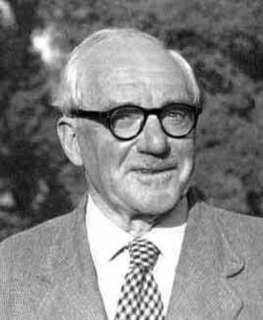
John Edensor Littlewood was a British mathematician. He worked on topics relating to analysis, number theory, and differential equations, and had a lengthy collaboration with G. H. Hardy and Mary Cartwright.
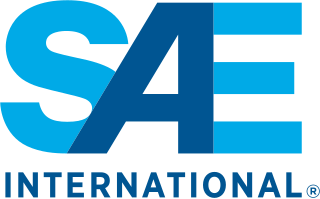
SAE International, previously known as the Society of Automotive Engineers, is a U.S.-based, globally active professional association and standards developing organization for engineering professionals in various industries. SAE International World Headquarters is in Warrendale, Pennsylvania, located 20 miles north of Pittsburgh, Pennsylvania. Principal emphasis is placed on global transport industries such as aerospace, automotive, and commercial vehicles. Accordingly, the name SAE International was established to reflect the broader emphasis on mobility.
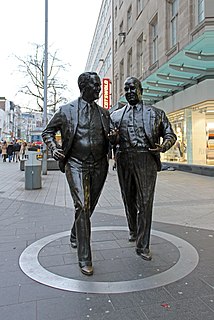
Sir John Moores was an English businessman, football club owner, politician and philanthropist, most famous for the founding of the now defunct Littlewoods retail and football pools company. Liverpool John Moores University is named in his honour.

The Air Medal is a military decoration of the United States Armed Forces. It was created in 1942 and is awarded for single acts of heroism or meritorious achievement while participating in aerial flight.

Dame Mary Lucy Cartwright, was a British mathematician. She was one of the pioneers of what would later become known as chaos theory. Along with J. E. Littlewood, Cartwright saw many solutions to a problem which would later be seen as an example of the butterfly effect.

Robert Sinclair Dietz was a scientist with the US Coast and Geodetic Survey. Dietz, born in Westfield, New Jersey, was a marine geologist, geophysicist and oceanographer who conducted pioneering research along with Harry Hammond Hess concerning seafloor spreading, published as early as 1960–1961. While at the Scripps Institution of Oceanography he observed the nature of the Emperor chain of seamounts that extended from the northwest end of the Hawaiian Island–Midway chain and speculated over lunch with Robert Fisher in 1953 that something must be carrying these old volcanic mountains northward like a conveyor belt.

The Royal Army Veterinary Corps (RAVC), known as the Army Veterinary Corps (AVC) until it gained the royal prefix on 27 November 1918, is an administrative and operational branch of the British Army responsible for the provision, training and care of animals. It is a small corps, forming part of the Army Medical Services.
British campaign medals are awarded to members of the British Armed Forces, Allied forces and civilians participating in specified military campaigns. Examples include the Defence Medal, for homeland defence in World War II, and the Atlantic Star for World War II sea service in the Atlantic.

The Royal Anthropological Institute of Great Britain and Ireland (RAI) is a long-established anthropological organisation, with a global membership. Its remit includes all the component fields of anthropology, such as biological anthropology, evolutionary anthropology, social anthropology, cultural anthropology, visual anthropology and medical anthropology, as well as sub-specialisms within these, and interests shared with neighbouring disciplines such as human genetics, archaeology and linguistics. It seeks to combine a tradition of scholarship with services to anthropologists, including students.
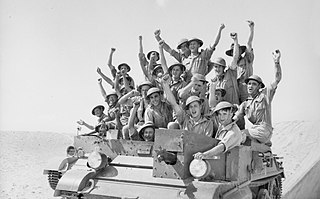
The 2/7th Battalion was an infantry battalion of the Australian Army raised for service during World War II. Formed as part of the 6th Division shortly after the outbreak of the war as part of the all-volunteer Second Australian Imperial Force, the 2/7th Battalion's initial personnel were recruited primarily from the state of Victoria, although later reinforcements were drawn from most other Australian states. Basic training was completed in Australia, after which the battalion embarked for the Middle East as part of the first batch of Australian troops to deploy overseas. Further training was undertaken in Palestine before the battalion went into action against the Italians in January 1941. After participating in the successful capture of Bardia and Tobruk, it was committed to the disastrous Battles of Greece and Crete, where the battalion was essentially destroyed after the majority of its personnel were captured.
The Canadian Academy of Engineering is a national academy of distinguished professional engineers in all fields of engineering, who are elected on the basis of "their distinguished service and contribution to society, to the country and to the profession". Founded in 1987, the Academy has over 750 Fellows. The Academy's 35-year history has been published on their website.

Francis Patrick Kelly, CBE, FRS is Professor of the Mathematics of Systems at the Statistical Laboratory, University of Cambridge. He served as Master of Christ's College, Cambridge from 2006 to 2016.

The Wright Brothers Medal was conceived of in 1924 by the Dayton Section of the Society of Automotive Engineers, and the SAE established it in 1927 to recognize individuals who have made notable contributions in the engineering, design, development, or operation of air and space vehicles. The award is based on contributed research papers.
(William) Miles Webster Thomas, Baron Thomas DFC, known as Sir Miles Thomas from 1943–1971, was a Welsh businessman. He was Managing Director of the Morris Motors, 1940–1947, Chairman of the British Overseas Airways Corporation, 1949–1956, Chairman of the merger broker Chesham Amalgamations, and President and Chairman of the National Savings Committee.

The Genetics Society is a British learned society. It was founded by William Bateson and Edith Rebecca Saunders in 1919 and celebrates its centenary year in 2019. It is therefore is one of the oldest learned societies devoted to genetics. Its membership of over 1900 consists of most of the UK's active professional geneticists, including researchers, teachers and students. Industry and publishing are also represented in the membership.
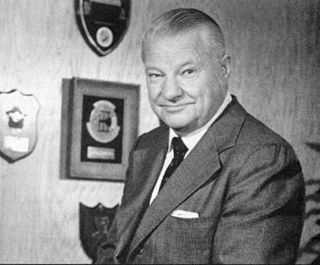
Clarence Leonard "Kelly" Johnson was an American aeronautical and systems engineer. He is recognized for his contributions to a series of important aircraft designs, most notably the Lockheed U-2 and SR-71 Blackbird. Besides the first production aircraft to exceed Mach 3, he also produced the first fighter capable of Mach 2, the United States' first operational jet fighter, as well as the first fighter to exceed 400 mph, and many other contributions to various aircraft. As a member and first team leader of the Lockheed Skunk Works, Johnson worked for more than four decades and is said to have been an "organizing genius". He played a leading role in the design of over forty aircraft, including several honored with the prestigious Collier Trophy, acquiring a reputation as one of the most talented and prolific aircraft design engineers in the history of aviation. In 2003, as part of its commemoration of the 100th anniversary of the Wright Brothers' flight, Aviation Week & Space Technology ranked Johnson eighth on its list of the top 100 "most important, most interesting, and most influential people" in the first century of aerospace. Hall Hibbard, Johnson's Lockheed boss, referring to Johnson's Swedish ancestry, once remarked to Ben Rich: "That damned Swede can actually see air."
John H. McMasters was an aeronautical engineer notable for his contributions to aerodynamics and engineering education.

Air Chief Marshal Lakshman Madhav Katre, PVSM, AVSM and Bar was the head of the Indian Air Force from 1984 to 1985, as Chief of the Air Staff —and the second IAF Chief of Staff to die in— harness. He was awarded the Param Vishisht Seva Medal and Ati Vishisht Seva Medal and Bar. He completed his schooling from The Doon School, Dehradun, India. In his career in the lAF, he has commanded with distinction Operational Squadrons and Squadrons and stations and the Air Force Academy. During 1971 war he successfully conducted uninterrupted operations from one of our most forward airfields and one, which was regularly attacked by the P AF. This was due to his meticulous planning.
Robert Hauschild Liebeck is an American aerodynamicist, professor and aerospace engineer at the Boeing Company. He currently heads Boeing's Blended Wing Body ("BWB") program and has been a member of the National Academy of Engineering since 1992. He is best known for his contributions to aircraft design and his pioneering airfoil designs known as the "Liebeck Airfoil".